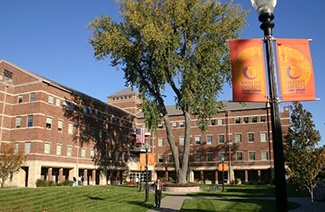GMAT阅读对刚开始备考GMAT考试的考生是有难度的,考生想要提高这部分的分数,就必须多加练习熟悉更重阅读并掌握一定的阅读技巧。本文小编为大家带来了
All of the cells in a particular plant start out with the
same complement of genes. How then can these cells
differentiate and form structures as different as roots,
stems, leaves, and fruits? The answer is that only a
(5) small subset of the genes in a particular kind of cell are
expressed, or turned on, at a given time. This is accom-
plished by a complex system of chemical messengers
that in plants include hormones and other regulatory
molecules. Five major hormones have been identified:
(10) auxin, abscisic acid, cytokinin, ethylene, and gibberel-
lin. Studies of plants have now identified a new class of
regulatory molecules called oligosaccharins.
Unlike the oligosaccharins, the five well-known plant
hormones are pleiotropic rather than specific, that is,
(15) each has more than one effect on the growth and devel-
opment of plants. The five has so many simultaneous
effects that they are not very useful in artificially
controlling the growth of crops. Auxin, for instance,
stimulates the rate of cell elongation, causes shoots to
(20) grow up and roots to grow down, and inhibits the
growth of lateral shoots. Auxin also causes the plant to
develop a vascular system, to form lateral roots, and to
produce ethylene.
The pleiotropy of the five well-studied plant
(25) hormones is somewhat analogous to that of certain
hormones in animal. For example, hormones from the
hypothalamus in the brain stimulate the anterior lobe
of the pituitary gland to synthesize and release many
different hormones, one of which stimulates the release
(30) of hormones from the adrenal cortex. These hormones
have specific effects on target organs all over the body.
One hormone stimulates the thyroid gland, for
example, another the ovarian follicle cells, and so forth.
In other words, there is a hierarchy of hormones.
(35) Such a hierarchy may also exist in plants. Oligosac-
charins are fragments of the cell wall released by
enzymes: different enzymes release different oligosac-
charins. There are indications that pleiotropic plant
hormones may actually function by activating the
(40) enzymes that release these other, more specific chemical
messengers from the cell wall.
1. According to the passage, the five well-known plant
hormones are not useful in controlling the growth of
crops because
(A) it is not known exactly what functions the hormones
perform
(B) each hormone has various effects on plants
(C) none of the hormones can function without the
others
(D) each hormone has different effects on different kinds
of plants
(E) each hormone works on only a small subset of a
cell’s genes at any particular time
2. The passage suggests that the place of hypothalamic
hormones in the hormonal hierarchies of animals is
similar to the place of which of the following in plants?
(A) Plant cell walls
(B) The complement of genes in each plant cell
(C) A subset of a plant cell’s gene complement
(D) The five major hormones
(E) The oligosaccharins
3. The passage suggests that which of the following is a
function likely to be performed by an oligosaccharin?
(A) To stimulate a particular plant cell to become part of
a plant’s root system
(B) To stimulate the walls of a particular cell to produce
other oligosaccharins
(C) To activate enzymes that release specific chemical
messengers from plant cell walls
(D) To duplicate the gene complement in a particular
plant cell
(E) To produce multiple effects on a particular
subsystem of plant cells
4. The author mentions specific effects that auxin has on
plant development in order to illustrate the
(A) point that some of the effects of plant hormones can
be harmful
(B) way in which hormones are produced by plants
(C) hierarchical nature of the functioning of plant
hormones
(D) differences among the best-known plant hormones
(E) concept of pleiotropy as it is exhibited by plant
hormones
5. According to the passage, which of the following best
describes a function performed by oligosaccharins?
(A) Regulating the daily functioning of a plant’s cells
(B) Interacting with one another to produce different
chemicals
(C) Releasing specific chemical messengers from a
plant’s cell walls
(D) Producing the hormones that cause plant cells to
differentiate to perform different functions
(E) Influencing the development of a plant’s cells by
controlling the expression of the cells’ genes
6. The passage suggests that, unlike the pleiotropic
hormones, oligosaccharins could be used effectively
to
(A) trace the passage of chemicals through the walls of
cells
(B) pinpoint functions of other plant hormones
(C) artificially control specific aspects of the
development of crops
(D) alter the complement of genes in the cells of plants
(E) alter the effects of the five major hormones on
plant development
7. The author discusses animal hormones primarily in
order to
(A) introduce the idea of a hierarchy of hormones
(B) explain the effects that auxin has on plant cells
(C) contrast the functioning of plant hormones and
animals hormones
(D) illustrate the way in which particular hormones
affect animals
(E) explain the distinction between hormones and
regulatory molecules

















